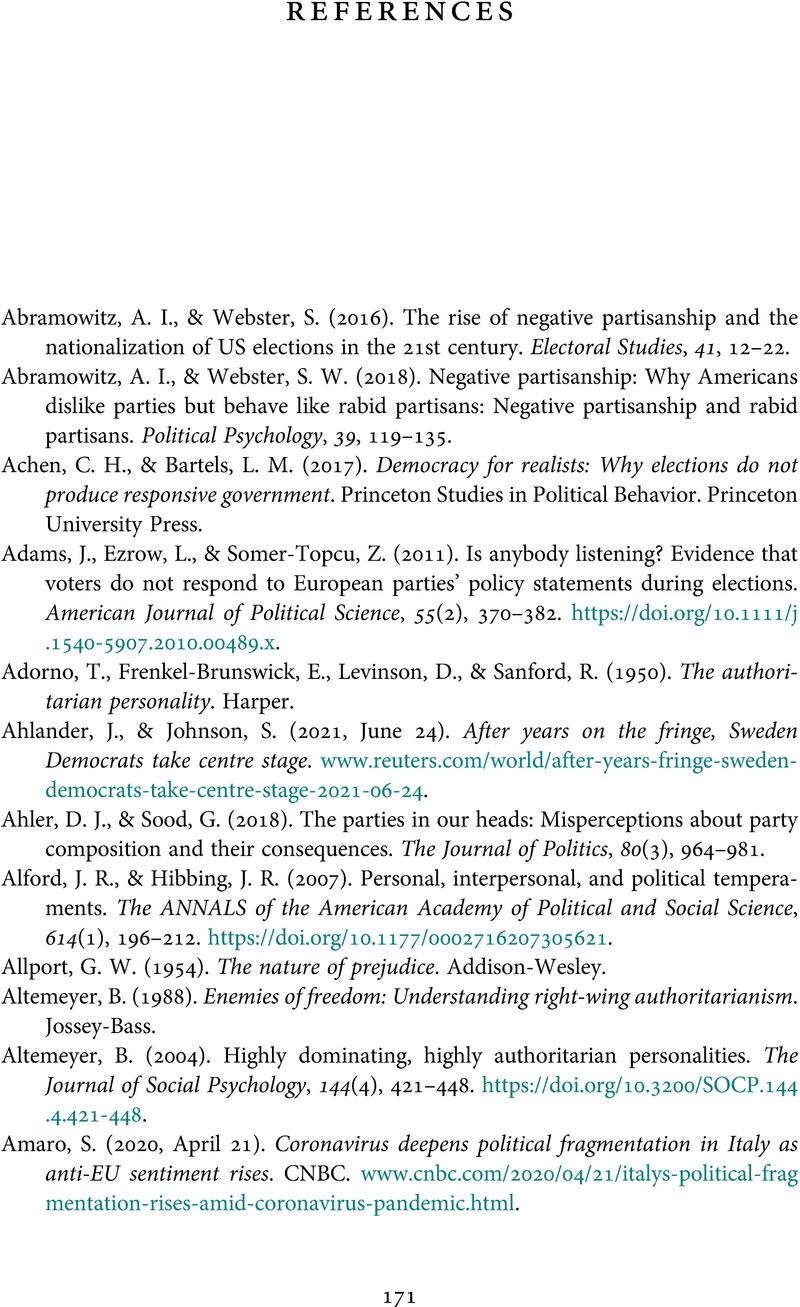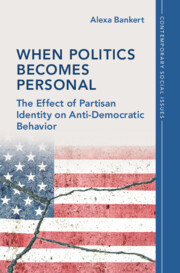Book contents
- When Politics Becomes Personal
- Contemporary Social Issues
- When Politics Becomes Personal
- Copyright page
- Dedication
- Contents
- Figures
- Tables
- Acknowledgments
- 1 Introduction to the Book
- 2 From Rational Choice to Partisan Identity
- 3 Partisan Identity and Political Behavior
- 4 Negative Partisanship
- 5 The Measurement of Positive Partisan Identity
- 6 The Measurement of Negative Partisan Identity
- 7 The Psychological Origins of Positive and Negative Partisan Identity
- 8 The Impact of Partisan Identities on Democratic Behavior in the United States and Europe
- 9 The Impact of Partisan Identities on Anti-Democratic Behavior in the United States and Europe
- 10 Reconciling Partisanship and Democracy
- 11 Future Outlook
- Appendix
- References
- Index
- References
References
Published online by Cambridge University Press: 04 January 2024
- When Politics Becomes Personal
- Contemporary Social Issues
- When Politics Becomes Personal
- Copyright page
- Dedication
- Contents
- Figures
- Tables
- Acknowledgments
- 1 Introduction to the Book
- 2 From Rational Choice to Partisan Identity
- 3 Partisan Identity and Political Behavior
- 4 Negative Partisanship
- 5 The Measurement of Positive Partisan Identity
- 6 The Measurement of Negative Partisan Identity
- 7 The Psychological Origins of Positive and Negative Partisan Identity
- 8 The Impact of Partisan Identities on Democratic Behavior in the United States and Europe
- 9 The Impact of Partisan Identities on Anti-Democratic Behavior in the United States and Europe
- 10 Reconciling Partisanship and Democracy
- 11 Future Outlook
- Appendix
- References
- Index
- References
Summary

- Type
- Chapter
- Information
- When Politics Becomes PersonalThe Effect of Partisan Identity on Anti-Democratic Behavior, pp. 171 - 188Publisher: Cambridge University PressPrint publication year: 2024



